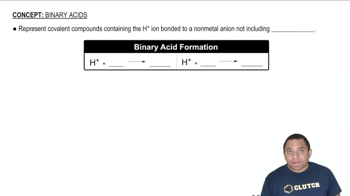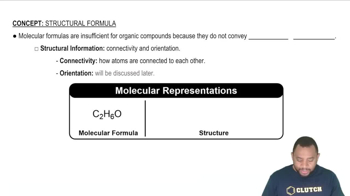Elements in the same group of the periodic table often form oxyanions with the same general formula. The anions are also named in a similar fashion. Based on these observations, suggest a chemical formula or name, as appropriate, for each of the following ions: (d) hydrogen tellurate ion.

Many familiar substances have common, unsystematic names. For each of the following, give the correct systematic name: (a) salt peter, KNO3 (b) soda ash, Na2CO3 (c) lime, (d) muriatic acid, HCl, CaO (e) Epsom salts, MgSO4 (f) milk of magnesia, Mg(OH)2.
 Verified step by step guidance
Verified step by step guidance
Verified video answer for a similar problem:
Key Concepts
Acids and Their Nomenclature

Common vs. Systematic Names

Chemical Formula Representation

Carbonic acid occurs in carbonated beverages. When allowed to react with lithium hydroxide, it produces lithium carbonate. Lithium carbonate is used to treat depression and bipolar disorder. Write chemical formula for carbonic acid, lithium hydroxide, and lithium carbonate.
Because many ions and compounds have very similar names, there is great potential for confusing them. Write the correct chemical formulas to distinguish between (a) sodium carbonate and sodium bicarbonate, (b) potassium peroxide and potassium oxide, (c) aluminum nitride and aluminum nitrite, (d) iron(II) oxide and iron(III) oxide
Because many ions and compounds have very similar names, there is great potential for confusing them. Write the correct chemical formulas to distinguish between (e) hydride ion and hydroxide ion, (f) magnesium nitride and magnesium nitrite, (g) mercurous chloride and mercuric chloride, (h) cuprous oxide and cupric oxide.
